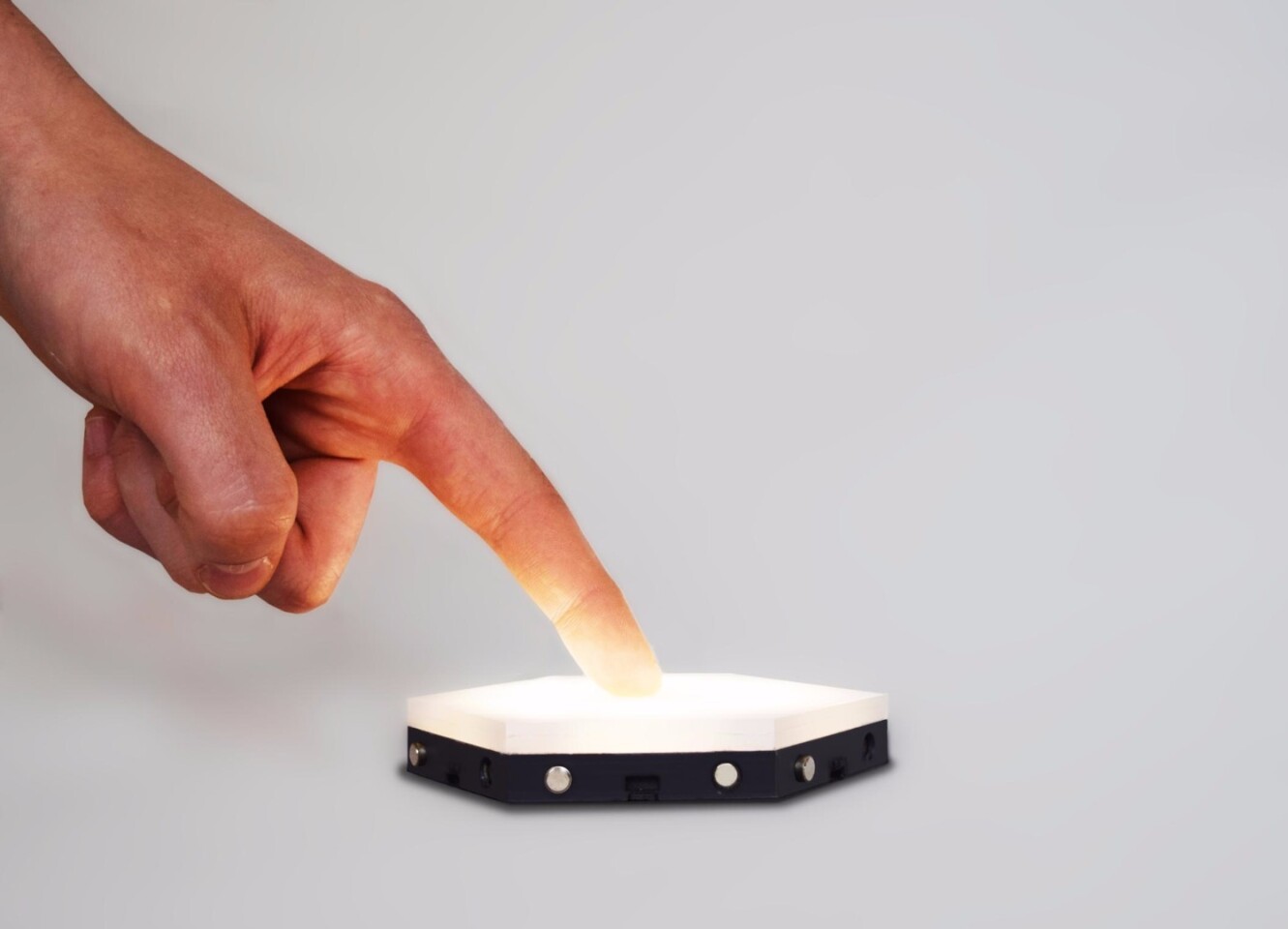Sometimes it would be useful, or even just cool, to be able to illuminate a whole wall. That is the principle behind the Helios modular LED lighting system, where hexagonal units can be joined together magnetically to cover any area and turned on or off individually by touch.
The Helios system is similar to the Nanoleaf Aurora Smarter Kit, which uses 8.25 x 9.4 in (21 x 24 cm) triangular panels in a similar way. The hexagonal Helios modules are smaller, though, at 4.3 in (11 cm) across their longest span and 0.4-in (1-cm) thick, and do not feature the smart and color changing properties of the Nanoleaf system. They are designed less for eye-catching aesthetics and more as a functional and elegant means of lighting a room.
Dyena, the firm behind the Helios system, explains that the aim is for users to be able to turn the interior architecture of a space into a light source. A few of the modules could be use together at a desk to provide light when working or a whole wall could be covered in them.
Each 6.3 W unit is said to produce 400 lm, which is about the same brightness as a 40 W incandescent bulb or a 6 W LED bulb. Each module added, therefore, will be like lighting a room with an additional bulb and up to 105 modules can be joined together in one circuit. A display can be bigger than 105 modules, but they must be on different circuits.

The modules can be connected to the wall using nails or adhesive pads and are linked together by way of small magnets embedded in each of their sides. For large installations, it is suggested that at least the central modules are connected to the wall using nails so as to provide a strong starting point.
The magnetic joining points also double as electrical connections, allowing power from one module plugged into an adapter to be relayed between up to 105 linked modules. Once a number of the units are joined together in this way, a user can just tap or sweep their hand over the ones they want to switch on, with integrated capacitive sensors detecting their touch.
A Kickstarter crowdfunding campaign for the Helios lighting system is underway. Pledges start from £49 (US$61) for a pack of five panels and a power unit. Assuming all goes to plan with the campaign and roll-out, shipping is expected from April next year.
The video below is the Kickstarter pitch for the Helios lighting.
Sources: Helios, Kickstarter










